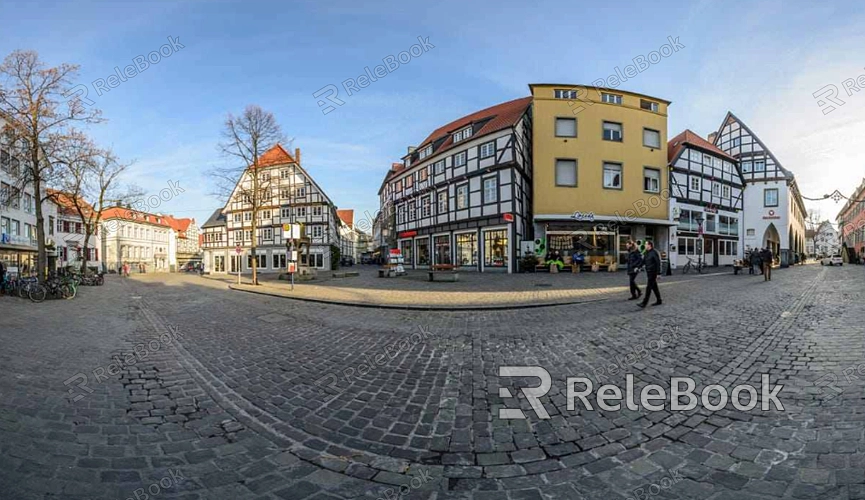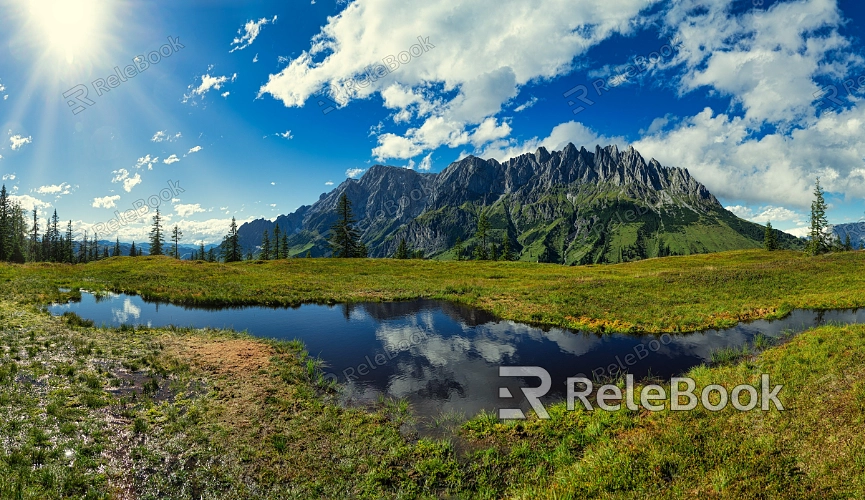What Are the Differences Between HDR Texture Formats?
HDR textures have become essential for achieving realistic lighting and environmental effects in 3D modeling and rendering. Whether you're working on scene lighting, reflection maps, or creating complex materials, HDR textures play a crucial role across various 3D software such as 3ds Max, Blender, Cinema 4D, and Maya. However, in practical work, the variety of HDR texture formats can often lead to confusion. Choosing the right HDR format not only impacts the rendering outcome but also affects workflow efficiency. In this article, we'll explore the differences between some common HDR texture formats to help designers make more informed decisions in their projects.

1. Overview of HDR Texture Formats
HDR (.hdr) Format
The HDR format is one of the standard formats for high dynamic range images, widely used in various 3D software. It can store more brightness information than regular images, resulting in richer lighting effects during rendering. The file size of HDR format is usually smaller, making it ideal for projects that require efficient processing.
OpenEXR (.exr) Format
OpenEXR is an open-source format developed by Industrial Light & Magic (ILM) and is primarily used in the film and visual effects industry. Compared to the HDR format, OpenEXR supports multiple channels and higher precision, allowing it to store more image data. This makes it particularly suitable for high-end rendering projects that require highly accurate lighting and complex materials.
Radiance RGBE (.hdr/.pic) Format
The Radiance RGBE format is commonly used in lighting simulation and architectural visualization. Unlike other HDR formats, RGBE compresses brightness information in a compact way, resulting in smaller file sizes. Although its precision is lower, RGBE is a good choice for scenes where fast computation is needed.
2. Suitable Scenarios for Different HDR Formats
Environmental Lighting
In environmental lighting, HDR and OpenEXR formats are the most common choices. The HDR format, due to its small size and fast processing, is often used in real-time rendering and game development. OpenEXR, with its high precision and multi-channel support, is better suited for visual effects in films and high-end visualization projects.
Reflection and Refraction
Reflection and refraction textures usually require highly accurate lighting information, giving OpenEXR an advantage in these applications. By storing a greater range of brightness levels and color information, OpenEXR can produce more realistic reflection and refraction effects on complex material surfaces.
Light Maps
Light mapping is another common application for HDR textures. For light maps that require fast computation, the Radiance RGBE format is widely used in architectural visualization and simple lighting simulations due to its compactness and adequate storage of brightness information.

3. Performance Impact of HDR Formats
File Size and Processing Speed
The file size and processing speed of different HDR formats vary. The HDR format generally has a smaller file size compared to OpenEXR and RGBE formats, making it faster to process and ideal for real-time rendering projects. OpenEXR, on the other hand, stores more data, resulting in larger files and slower processing speeds, but it offers significant advantages in high-end rendering.
Compatibility
Compatibility is another crucial factor when selecting an HDR format. Most 3D software supports HDR and OpenEXR formats, but some specific software may have limited support for Radiance RGBE. It's important to understand the software’s compatibility with different formats before starting a project.
Image Quality
The image quality of different HDR formats also varies. OpenEXR provides the best image quality in complex scenes due to its high precision and multi-channel support. Meanwhile, HDR and Radiance RGBE formats strike a balance between file size and processing speed while still meeting basic requirements.
4. Choosing the Right HDR Format
Project Requirements Analysis
When choosing an HDR format, the first thing to consider is the specific needs of the project. If your project involves a large amount of lighting information and demands the highest rendering quality, OpenEXR is undoubtedly the best choice. However, if you prioritize processing speed and file size, the HDR format might be more suitable.
Hardware and Software Support
It's also essential to consider the hardware and software support when selecting an HDR format. Some HDR formats may require higher hardware configurations or specific software plugins to fully utilize their advantages, so understanding these requirements early in the project is crucial.
Future Scalability
Finally, consider the future scalability of your project. Choosing an HDR format that is widely supported in future versions of 3D software ensures the long-term maintainability and expandability of your project.
Selecting the right HDR texture format is critical for achieving the desired outcome in 3D modeling and rendering. This article has explored several common HDR texture formats and their differences, providing designers with a reference to help them make informed decisions. If you're looking for high-quality HDR textures or other 3D assets, Relebook is a reliable platform. With Relebook, you can access a wealth of resources that will help you achieve better results and find inspiration in your projects.

